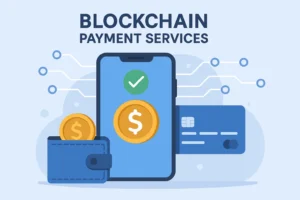Solana vs. Polkadot, Offering original solutions to scalability, interoperability, and decentralization. The blockchain sector is a battlefield of innovation where platforms fight for supremacy. Solana and Polkadot have become two of the most hotly contested and technically ambitious initiatives among the candidates. While Polkadot, developed by Ethereum co-founder Gavin Wood, advocates a multi-chain future where blockchains interact smoothly. Solana noted for its blazing-fast transaction rates, touts itself as the “high-performance Blockchain for mass adoption. Developers, investors, and businesses wonder which blockchain has the better future. Both ecosystems flourish under changing market circumstances. This paper explores their structures, ecosystems, problems, and growth possibilities to find the solution.
Speed vs. Interoperability

Leveraging a special mix of Proof of History (PoH) and Proof of Stake (PoS). Solana’s design is engineered for speed and scalability. PoH timestamps transactions before they are handled. This enables parallel processing and lowers validator coordination overhead. This lets Solana accomplish Optimal conditions, allowing a throughput of 65,000 transactions per second (TPS). Among major Layer 1s, transaction costs $0.00025, the lowest.
Faster than Visa’s one to three seconds, finality 400–800 milliseconds. Solana’s design, nevertheless, trades performance for decentralization. Critics contend this results in centralizing hazards, as shown by ongoing network disruptions (such as a 5-hour blackout in February 2024).
Interoperability Powerhouse
Polkadot’s vision is focused on making cross-chain communication possible. By its relay chain and para chain construction: Relay Chain. The primary chain organizing security and consensus for every linked parachute. Customizable, application-specific blockchains with 100+ slots accessible parachains. Links Polkadot to outside systems, including Ethereum and Cosmos. Polkadot employs Nominated Proof of Stake (NPoS), in which validators are backed by nominator,s therefore improving security.
Although slower than Solana (1,000 TPS per parachain), its shared security paradigm and interoperability facilities make it best for businesses and governments to create linked systems. Important Differentiator Solana gives raw performance top priority; Polkadot gives flexibility and cross-chain synergy top priority.
Ecosystem Growth
Driven by Solana’s ecology exploding since 2023, it is Now handling $4B+ in TVL Dand eFi Innovations Platforms, including Kamino (lending) and Jupiter (DEX aggregator).NFT Recurrence In March 2024, Tensor’s NFT marketplace surpassed OpenSea’s daily volume. Consumer app projects like Helium (decentralized 5G) and Dialect (Web3 messaging) draw general consumers. Along with onboarding big businesses like Shopify (NFT integrations) and Visa (stablecoin pilots), the network hosts 2,500+ monthly active developers.
Niche Enterprise and Governance Polkadot Polkadot’s ecosystem excels in specific fields. The Organizational Adoption Polkadot is used at central banks in Singapore and Switzerland for CBDC research. Resources for Governance Opengov lets community-driven, detailed decisions be made. With $1.2B in total TVL, Parachain Breakouts Moonbeam (EVM compatibility) and Acala lead. Polkadot’s developer count, citing Electric Capital, trails at ~1,200 monthly actives. Its sharp learning curve and emphasis on infrastructure above apps have delayed consumer-facing development.
Interoperability Powerhouse
Solana rules most use situations needing cheap cost and fast speed: Decentralized Commerce Solana DEXs account for seventy percent of DeFi volume in meme coins. Aurora and Gaming Star Atlas use Solana for the in-game real-time economy. Mobile Integration Saga phone sales tripled in 2024, increasing Web3 app adoption.

Solana vs. Polkadot, The Foundation of Web 3 Infrastructure Polkadot shines in intricate. The cross-chain settings are in the Management of Supplies Polkadot parachain. Interbank Settlements Polkadot tested on Onyx cross-border payments for JPMorgan. Public Industry Polkadot is used for digital identity and credentials by the EU EBSI project.
Blockchain Verdict
Solana’s developer-friendly tools, consumer apps, and cultural cachet (via meme coins) set it to rule retail and high-frequency markets. Should Firedancer resolve dependability problems, SOL could contest Ethereum as the DeFi hub. Edge of Interoperability for Polkadot. Polkadot’s multi-chain architecture fits the hundreds of blockchains working together in Web3’s future.
Its institutional alliances and governance approach might make it the pillar of world financial architecture. While Polkadot’s concept of a connected blockchain cosmos may age better, Solana shines for speed and accessibility today. Diversification between both ecosystems protects against an uncertain future for investors.
Conclusion
One stresses speed and accessibility, and the other stresses institutional acceptance and interoperability. Despite questions about decentralization and network reliability, Solana’s low costs and great speed make it a formidable competitor for retail and DeFi uses. Despite a steeper learning curve and slower ecosystem development, Polkadot’s cross-chain capabilities make it a basic layer for industry and government use.
Solana vs. Polkadot, both blockchains offer special advantages that satisfy various market needs. Solana rules in consumer-driven apps and quick transactions, but as Web3 develops, Polkadot’s organized interoperability could prove crucial. Diversification across both ecosystems is the best bet in an unpredictable. Blockchain environment for investors and developers seeking long-term sustainability.




